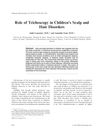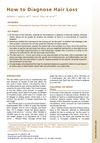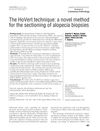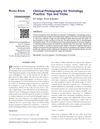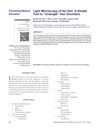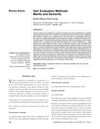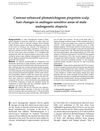Diagnostic Modalities in Trichology: An Update
January 2015
in “
Hair therapy & transplantation
”
trichoscopy trichometry electron microscopy trichogram scalp biopsy Scanning Electron Microscopy Transmission Electron Microscopy Atomic Force Microscopy HoVert technique Direct immunofluorescence primary cicatricial alopecias microarray analysis Reflectance Confocal Microscopy Trichoscan SEM TEM AFM RCM
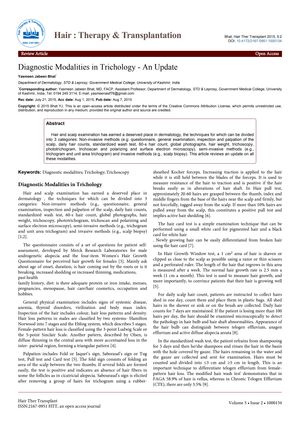
TLDR New hair and scalp disease diagnosis methods are important for correct treatment.
The article from 2015 reviews diagnostic techniques in trichology, including non-invasive, semi-invasive, and invasive methods. Non-invasive methods range from questionnaires to electron microscopy, while semi-invasive and invasive methods include trichograms and scalp biopsies, respectively. The article highlights the use of trichoscopy, trichometry, and various microscopy techniques for analyzing hair structure and disorders. It also discusses advanced tools like Scanning Electron Microscopy (SEM), Transmission Electron Microscopy, Atomic Force Microscopy, and the "HoVert" technique for scalp biopsies. Direct immunofluorescence is noted for differentiating between primary cicatricial alopecias (PCA), and microarray analysis for distinguishing between similar PCAs. Reflectance Confocal Microscopy (RCM) and Trichoscan are also mentioned as diagnostic tools. These modalities are crucial for accurate diagnosis and treatment monitoring of hair and scalp diseases.
